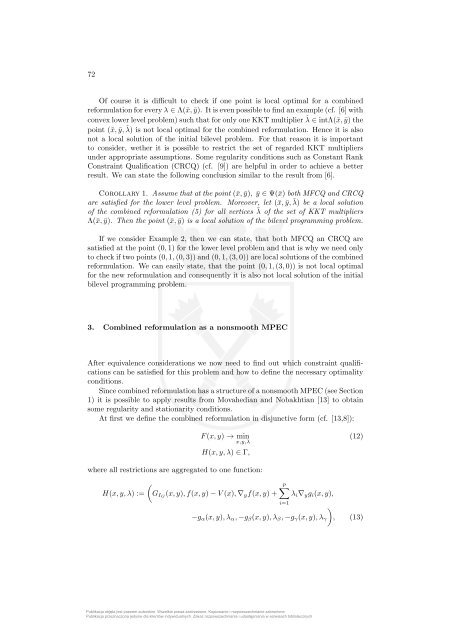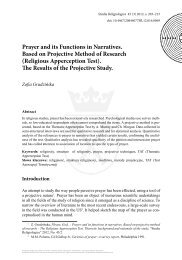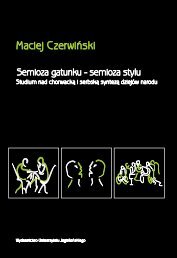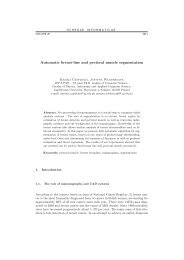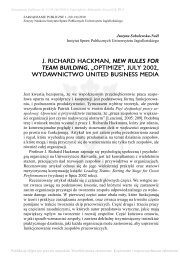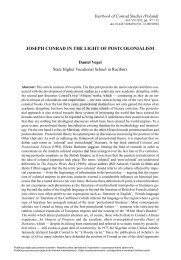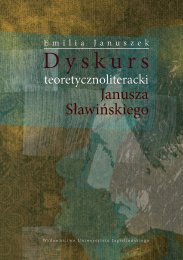Combined Reformulation of Bilevel Programming Problems
Combined Reformulation of Bilevel Programming Problems
Combined Reformulation of Bilevel Programming Problems
You also want an ePaper? Increase the reach of your titles
YUMPU automatically turns print PDFs into web optimized ePapers that Google loves.
72Of course it is difficult to check if one point is local optimal for a combinedreformulationforeveryλ ∈ Λ(¯x,ȳ). Itisevenpossiblet<strong>of</strong>indanexample(cf. [6]withconvexlowerlevel problem)such that foronly oneKKT multiplier ˆλ ∈ intΛ(¯x,ȳ)thepoint (¯x,ȳ,ˆλ) is not local optimal for the combined reformulation. Hence it is alsonot a local solution <strong>of</strong> the initial bilevel problem. For that reason it is importantto consider, wether it is possible to restrict the set <strong>of</strong> regarded KKT multipliersunder appropriate assumptions. Some regularity conditions such as Constant RankConstraint Qualification (CRCQ) (cf. [9]) are helpful in order to achieve a betterresult. We can state the following conclusion similar to the result from [6].Corollary 1. Assume that at the point (¯x,ȳ), ȳ ∈ Ψ(¯x) both MFCQ and CRCQare satisfied for the lower level problem. Moreover, let (¯x,ȳ,¯λ) be a local solution<strong>of</strong> the combined reformulation (5) for all vertices ¯λ <strong>of</strong> the set <strong>of</strong> KKT multipliersΛ(¯x,ȳ). Then the point (¯x,ȳ) is a local solution <strong>of</strong> the bilevel programming problem.If we consider Example 2, then we can state, that both MFCQ an CRCQ aresatisfied at the point (0,1) for the lower level problem and that is why we need onlyto check if two points (0,1,(0,3))and (0,1,(3,0))are local solutions <strong>of</strong> the combinedreformulation. We can easily state, that the point (0,1,(3,0)) is not local optimalfor the new reformulation and consequently it is also not local solution <strong>of</strong> the initialbilevel programming problem.3. <strong>Combined</strong> reformulation as a nonsmooth MPECAfter equivalence considerations we now need to find out which constraint qualificationscan be satisfied for this problem and how to define the necessary optimalityconditions.Sincecombined reformulationhasastructure<strong>of</strong>anonsmoothMPEC(see Section1) it is possible to apply results from Movahedian and Nobakhtian [13] to obtainsome regularity and stationarity conditions.At first we define the combined reformulation in disjunctive form (cf. [13,8]):F(x,y) → minx,y,λH(x,y,λ) ∈ Γ,(12)where all restrictions are aggregated to one function:H(x,y,λ) :=(G IG (x,y),f(x,y)−V(x),∇ y f(x,y)+p∑λ i ∇ y g i (x,y),i=1−g α (x,y),λ α ,−g β (x,y),λ β ,−g γ (x,y),λ γ), (13)Publikacja objęta jest prawem autorskim. Wszelkie prawa zastrzeżone. Kopiowanie i rozpowszechnianie zabronione.Publikacja przeznaczona jedynie dla klientów indywidualnych. Zakaz rozpowszechniania i udostępniania w serwisach bibliotecznych


